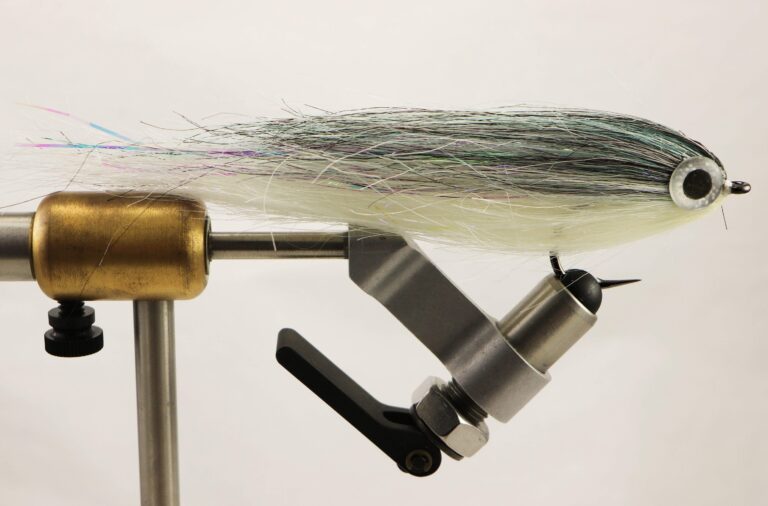To spot fish on the flats, look for movement and disturbances in the water. On a sunny day with clear water, you can spot fish by watching for their shadows or “pushes” as they move through the shallow water.
The flats are a popular location for anglers because they attract a variety of fish species, including redfish, bonefish, and tarpon. However, spotting these elusive fish can be a challenge. To increase your chances of success, it’s important to know what to look for.
One effective way to spot fish on the flats is to watch for movement and disturbances in the water. Look for ripples or wakes that indicate the presence of fish. On a sunny day with clear water, you can also watch for shadows or “pushes” as the fish move through the shallow water. Another tip is to pay attention to birds. Birds, such as seagulls and pelicans, often feed on small baitfish that are also sought after by larger fish. If you see birds diving or hovering above a particular area of the flats, there’s a good chance that fish are present. In addition, polarized sunglasses can be a valuable tool for spotting fish on the flats. These sunglasses reduce the glare from the water’s surface, allowing you to see into the water more clearly. Look for any movement or shape that stands out against the sandy or grassy bottom. By using these techniques and being patient and observant, you can increase your chances of spotting fish on the flats and have a more successful fishing trip.

Credit: fishingbooker.com
Understanding The Flats Ecosystem
The flats are a fascinating and dynamic ecosystem that holds a wealth of opportunities for anglers. To truly make the most of your fishing experience on the flats, it’s important to have a good understanding of the ecosystem and its characteristics.
In this section, we will explore the importance of the flats in fishing, the characteristics of a typical flats ecosystem, and how seasonal variations can affect fish behavior.
Importance Of The Flats In Fishing
- Flats provide a unique habitat for various species of fish, making them an ideal location for anglers.
- The flats offer a plentiful food source for fish, including crustaceans, baitfish, and other marine organisms. This abundance of food attracts fish and increases the chances of a successful catch.
- Moreover, the shallowness of the flats makes them perfect for sight fishing, as anglers can spot fish swimming in the clear waters, adding an exciting element to the fishing experience.
Characteristics Of A Typical Flats Ecosystem
- Flats are typically shallow areas of water, ranging from a few inches to a few feet deep.
- These areas are often sandy or grassy, providing a diverse and rich habitat for various marine organisms.
- The flats are characterized by their vast expanse, offering plenty of room for fish to roam and feed.
- Mangroves and seagrass beds are commonly found in flats ecosystems, providing additional shelter and food for fish.
Seasonal Variations And How They Affect Fish Behavior
- Seasonal variations play a crucial role in fish behavior on the flats.
- During the warmer months, fish are more active and tend to move closer to the shallow waters of the flats. This is because warmer water temperatures increase their metabolic rate, prompting them to seek food sources in shallower areas.
- In contrast, during colder months, fish may move to deeper waters or seek warmer pockets within the flats to endure the cooler temperatures. This can make spotting fish more challenging, as they are inclined to be less active and less visible.
- Additionally, seasonal variations can affect the availability of food sources on the flats. Changes in water temperature and other environmental factors can impact the abundance and distribution of baitfish and crustaceans, influencing fish behavior and feeding patterns.
Understanding the flats ecosystem is essential for any angler looking to spot fish on the flats. By recognizing the importance of the flats in fishing, familiarizing yourself with the characteristics of a typical flats ecosystem, and considering the seasonal variations that affect fish behavior, you can greatly enhance your chances of a successful fishing trip.
So grab your gear, head to the flats, and prepare to immerse yourself in the wonders of this unique and thriving ecosystem.
Reading The Water
The ability to read the water is crucial when it comes to spotting fish on the flats. By understanding the different elements of the water, you can identify potential areas where fish are likely to be hiding. Here are some key points to keep in mind:
Identifying Different Types Of Flats
- Mangrove flats: These flats are characterized by dense mangrove trees along the shoreline. They provide cover and food sources for fish, making them an ideal spot to search for feeding fish.
- Grassy flats: These flats are covered in seagrass beds, which are known to attract various species of fish. Look for patches of seagrass as they often hold a abundance of baitfish and, subsequently, larger predatory fish.
- Sandy flats: These flats are devoid of any vegetation or structure, and may appear featureless at first glance. However, sandy flats can still hold fish, especially if there are nearby drop-offs or channels where fish can seek food and shelter.
Observing Water Movement And Patterns
- Tide: Understanding tidal movements is crucial when it comes to reading the water. Fish tend to move with the tide, so pay attention to the direction and strength of the current. Look for water movement near channels, cuts, and drop-offs as these are prime spots where fish are likely to gather.
- Rip currents: These are areas where the current is particularly strong and causes water to form a visible channel. Rip currents often attract fish, as they create a conveyor belt of food being carried along. Keep an eye out for any rip currents or areas where the water appears to be moving faster.
- Tidal flats: During low tide, vast expanses of flats may become exposed. Take note of any tidal flats as these areas can concentrate fish. Keep an eye out for depressions or channels within the flats, as fish tend to seek refuge in these deeper areas.
Recognizing Structure And Hiding Spots For Fish
- Seagrass beds: As mentioned earlier, seagrass beds provide both food and cover for fish. Look for areas with dense seagrass as these are likely to hold an abundance of fish. Additionally, seagrass beds also release oxygen, creating a more favorable environment for fish.
- Mangrove roots: Thickets of mangrove trees create a complex network of roots that offer protection for various fish species. Cast your eyes along the shoreline and try to spot any mangrove roots protruding out of the water. These structures can be hiding spots for fish seeking refuge from predators.
- Rocky outcrops: If the flats feature rocky patches or outcrops, these can provide hiding spots for fish such as snook and redfish. Rocks offer structure and a place for fish to ambush their prey. Scan the water for any rocky areas and cast your bait or lure near these spots.
By honing your ability to read the water, you can significantly improve your chances of spotting fish on the flats. Remember to identify the different types of flats, observe water movement and patterns, and recognize the various structures and hiding spots for fish.
With practice and keen observation, you’ll become adept at identifying prime fishing areas in no time.
Recognizing Fish Behavior On The Flats
Understanding Feeding Patterns And Habits
- Fish have specific feeding patterns and habits that can help you spot them on the flats. Here are some key points to keep in mind:
- Fish are opportunistic feeders: They will often feed on whatever is most abundant and easily accessible in their environment. Understanding their preferred food sources can give you clues about where to find them.
- Tide and water temperature: Fish are sensitive to tide changes and water temperature variations. They may move to different areas of the flats depending on these factors. Knowing the optimal conditions for feeding can increase your chances of spotting fish.
- The impact of sunlight: Sunlight plays a crucial role in fish behavior on the flats. Certain fish species may become more active during specific times of the day when the lighting conditions are ideal for hunting. Observing shadows and sunlight patterns can help you anticipate fish activity.
Identifying Signs Of Fish Activity
- Being able to recognize signs of fish activity is essential for spotting fish on the flats. Consider the following points:
- Disturbances on the water’s surface: Look for disturbances such as splashing, ripples, or baitfish jumping out of the water. These can indicate the presence of larger predatory fish nearby.
- Birds and other wildlife: Pay attention to the behavior of birds and other wildlife. Seagulls diving into the water or pelicans hovering over a specific area might be signs that fish are present.
- Mud boils and wakes: Watch out for mud boils or wakes on the surface of the water. These can be caused by fish feeding near the bottom or as they chase after prey.
Decoding Body Language And Movement Of Fish
- Understanding fish body language and movement is crucial for spotting them on the flats. Here are some key points to consider:
- Tail movements: Fish such as redfish and bonefish often exhibit tail movements known as tailing. These occur when fish search for food by tipping their tails out of the water. Look for these distinctive movements to identify feeding fish.
- V-shaped wakes: Many fish species create v-shaped wakes when they move through the water. These wakes are caused by the movement of their tails and can be an excellent indicator of fish presence.
- Color changes and flashing scales: Some fish will change color or flash their scales when they are feeding or courting. These visual cues can help you spot fish, especially in clear water.
Remember, recognizing fish behavior on the flats takes practice and a keen eye. By understanding feeding patterns, identifying signs of fish activity, and decoding their body language and movement, you’ll greatly improve your ability to spot fish and increase your chances of success while fishing on the flats.
Conclusion
Spotting fish on the flats requires a keen eye and an understanding of their behavior. By observing the water movement, the presence of baitfish, and the distinguishing characteristics of different species, you can increase your chances of success. It is essential to be patient and adaptable, adjusting your strategies based on changing conditions.
Remember to use polarized sunglasses to reduce glare and enhance visibility. Developing a familiarity with the specific flats you fish will also greatly benefit your ability to spot fish. Taking the time to learn about the habitats and feeding patterns of different species will improve your overall success rate.
Continuous practice and experience will play a significant role in honing your spotting skills. So get out there, apply these tips, and enjoy the thrill of spotting fish on the flats!





